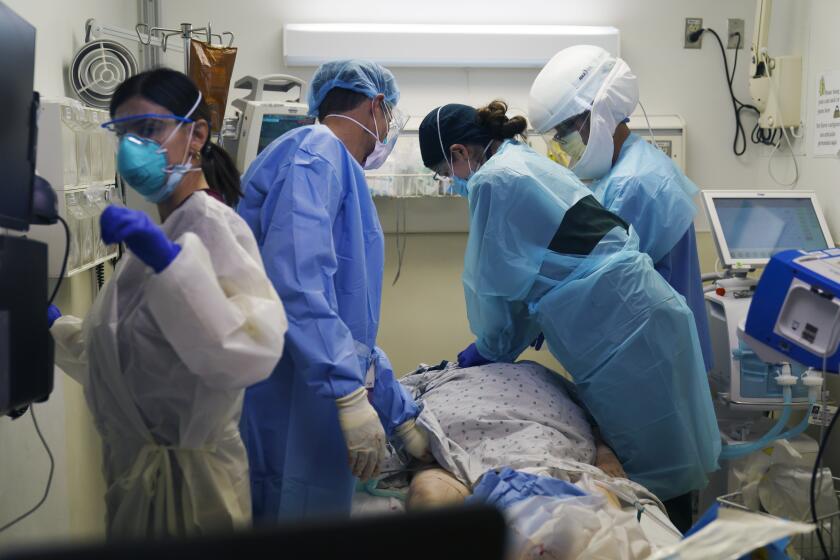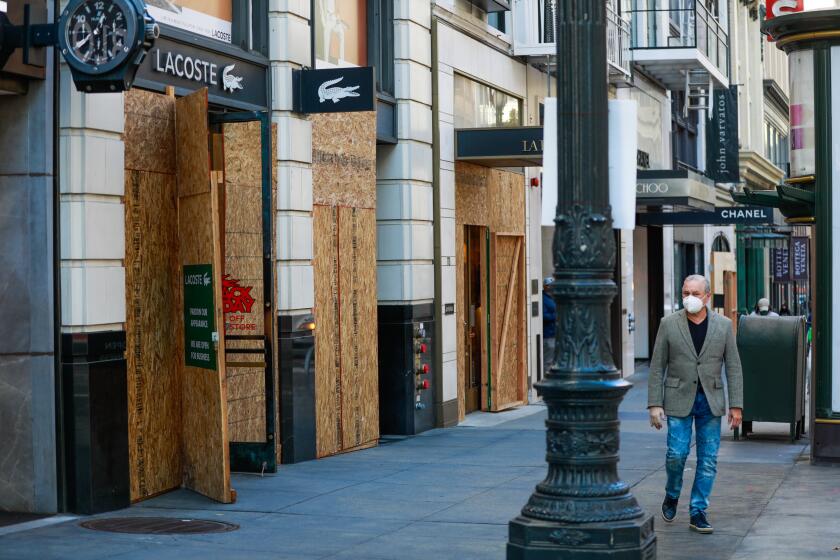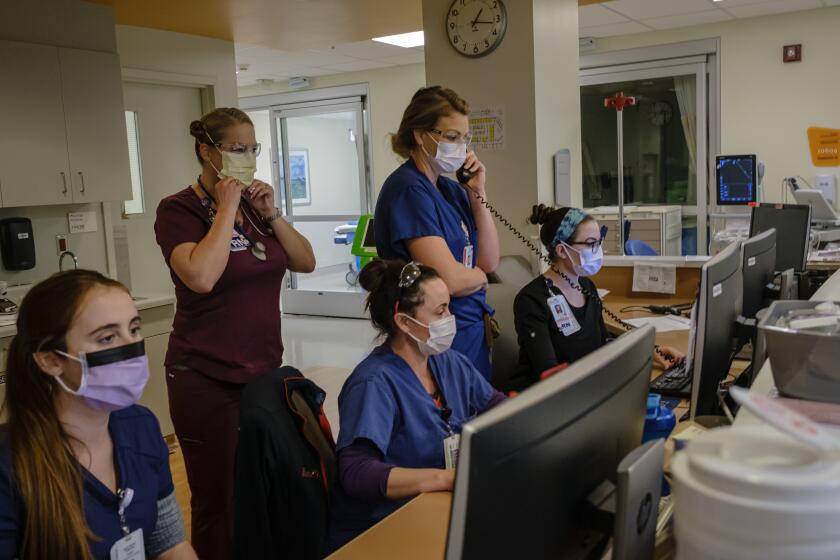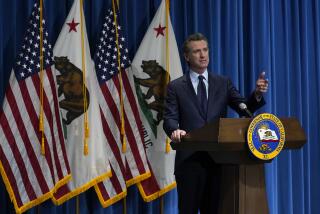Southern California faces stay-at-home order by Sunday if ICU bed shortage does not improve
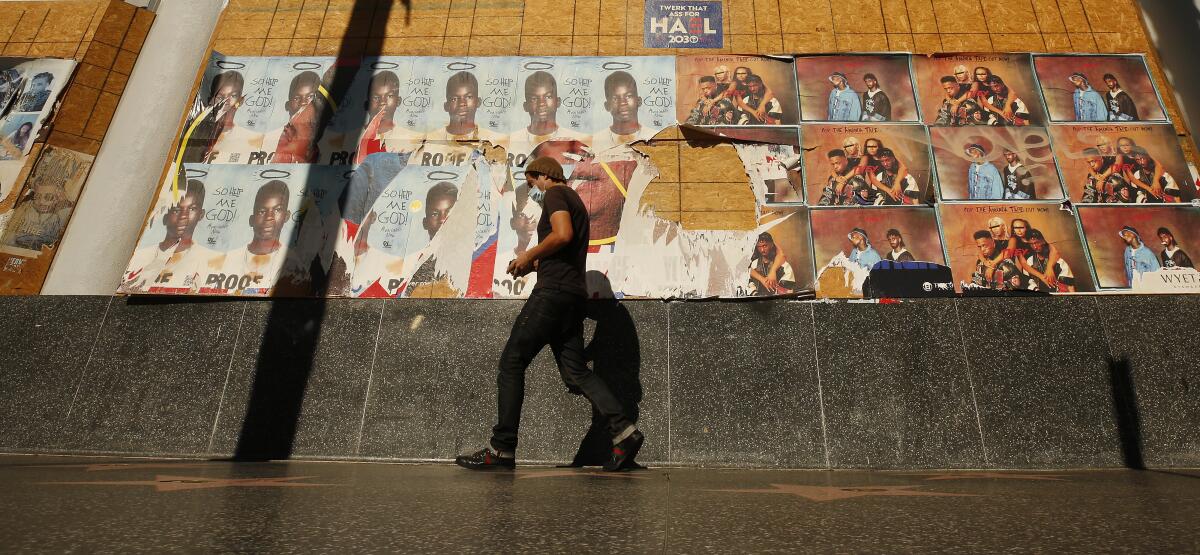
- Share via
Southern California’s intensive-care bed shortage entered the zone that, if it persists, would trigger the state’s stay-at-home order as early as Sunday.
On Friday night, the California Department of Public Health released new numbers showing that Southern California as well as the San Joaquin Valley now face a critical shortage of ICU beds, with each area having less than 15% of its capacity available.
That percentage is the threshold by which the state would order, within 24 hours, a regional stay-at-home order, which would shut outdoor restaurant dining, hair salons, nail salons, playgrounds, cardrooms, museums, zoos, aquariums and wineries and restrict retail capacity to 20%.
Friday’s numbers do not trigger the stay-at-home order. But if the percentages remain below 15% on Saturday, the order would be triggered as early as Sunday.
Current available ICU capacity by region as of Friday night:
· Bay Area: 21.2%
· Greater Sacramento Region: 21.4%
· Rural Northern California: 20.9%
· San Joaquin Valley: 14.1%
· Southern California: 13.1%
The news came as California and Los Angeles County on Friday set all-time records for coronavirus cases reported in a single day.
A county-by-county tally by The Times found that more than 22,300 coronavirus cases were reported across California on Friday alone, exceeding the record set Monday, when 21,848 cases were reported. The Times tallied 204 deaths reported Friday, the second highest total recorded in a single day of the entire pandemic.
Cumulatively, California has reported 1.3 million coronavirus cases and more than 19,700 deaths.
L.A. County has broken single-day coronavirus case records in three of the last four days this week. On Friday, 8,562 cases were reported, according to The Times’ tally, breaking the record set Thursday, when 7,713 were reported.
There were also 56 deaths recorded in L.A. County, a single-day tally not seen since Aug. 19.
The hard-hit county hit its fifth consecutive daily record for COVID-19 hospitalizations, with 2,769 people currently hospitalized. Of those, nearly a quarter are in intensive care, where numbers have tripled in the last six weeks.
Statewide over the last week, the state has averaged more than 17,800 new cases per day, according to data compiled by The Times. That’s quadruple the average from election day, and dwarfs even the darkest days of the summertime surge, when the rolling average never topped 10,000.
To put that number into perspective, 119,050 Californians have tested positive for the coronavirus in just the last seven days — almost the equivalent of everyone living in the city of Berkeley being infected.
The unprecedented case counts aren’t merely a byproduct of ramped-up testing.
The average rate at which coronavirus tests are coming back positive has soared and reached its highest level since May.
As of Friday, the rate at which coronavirus test results came back positive over the last week was 8.5%, more than triple what it was in early October.
The test positivity rate is now worse than at any point during California’s summer coronavirus wave, which has been the state’s deadliest. The rising positivity rate, which comes at a time that the number of tests performed has been increasing, is proof that the virus’ reach is spreading, epidemiologists say.
Hospitals are bracing for another surge in COVID-19 cases. This time, they’re worried about whether they’ll have enough staff.
With case numbers that are historically high and show no signs of relenting, California officials are turning their eyes toward the state’s hospital system, which they’ve long warned is at risk of being flooded by a wave of coronavirus patients.
Statewide, 9,065 Californians were hospitalized with a confirmed case as of Thursday — an all-time high and nearly double the number seen two weeks ago.
“The bottom line is if we don’t act now, our hospital system will be overwhelmed,” Gov. Gavin Newsom said Thursday. “If we don’t act now, we’ll continue to see a death rate climb, more lives lost.”
Gov. Gavin Newsom has announced a stay-at-home order affecting most of California.
The state has also seen more than 100 confirmed COVID-19 fatalities on each of the last four days. That hasn’t happened since early September.
Should the current rate of deaths continue, the total death toll would surpass 20,000 by early next week.
“This is the most challenging moment since the beginning of this pandemic,” Newsom said. “This is the time ... to put aside your doubt, to put aside your skepticism, to put aside your cynicism, to put aside your ideology, to put aside any consideration except this: Lives are in the balance. Lives will be lost unless we do more than we’ve ever done.”
Faced with COVID-19’s relentless acceleration, the state Thursday pulled an emergency brake — announcing new and far-reaching restrictions tied to regional strains on critical care services.
For purposes of the new statewide order, officials carved California into five regions: Southern California, the San Joaquin Valley, the Bay Area, the Greater Sacramento area and rural Northern California.
Additional restrictions — such as closing hair and nail salons, playgrounds, zoos, museums, aquariums and wineries; and requiring restaurants to return to takeout service only — would be implemented when a region’s intensive care unit capacity falls below 15%.
The earliest the stay-at-home order can be imposed on any region by the state is Sunday.
None of the five designated regions in California have reached the critical under-15% ICU capacity, but all are expected to hit that mark soon.
ICU capacity is not a static number, as hospitals can increase their available beds to a point should the need arise.
Though their regional ICU capacity has yet to fall below the designated level, health officers for Alameda, Contra Costa, Marin, San Francisco and Santa Clara counties, as well as the city of Berkeley, announced Friday that they would proactively implement the additional restrictions.
“We cannot wait until after we have driven off the cliff to pull the emergency brake,” Santa Clara County Health Officer Dr. Sara Cody said in a statement. “We understand that the closures under the state order will have a profound impact on our local businesses. However, if we act quickly, we can both save lives and reduce the amount of time these restrictions have to stay in place, allowing businesses and activities to reopen sooner.”
The new closures are scheduled to take hold across most of the Bay Area starting Sunday and will stay in place until Jan. 4.
Record high comes on the same day the state unveils guidelines that could subject the county to additional COVID-19 restrictions.
The latest state mandate has been met with consternation in some corners and controversy in others.
Some have questioned the regional approach — saying it doesn’t make sense to potentially drop the hammer on one county because of its neighbors’ circumstances. Others have dismissed the restrictions themselves as arbitrary and unscientific.
“The governor has been clamping down on our residents’ ability to provide for themselves and their families for weeks, with no evidence it has slowed the spread,” Michelle Steel, chairwoman of the Orange County Board of Supervisors, said in a statement Friday. “The evidence we have seen is more depression, more closed businesses and less work for those who need it most.”
Steel, a Republican who was recently elected to Congress, added that “the governor and state health officials should focus on protecting the most vulnerable in our communities and stop these sweeping orders that harm all of us.”
L.A. County Supervisor Hilda Solis, on the other hand, commended Newsom “for taking this difficult but necessary measure so we can bend the curve of COVID-19 once again, and perhaps for the last time.”
“The transmission of COVID-19 is not limited to the borders of our county, and is killing people across the state and country at a terrible pace,” she said in a statement. “Although we are more physically distanced now than in years past, we can come together as Californians to guard the health of our neighbors.”
A cadre of state lawmakers also sent a letter to Newsom Friday asking that he reconsider closing public outdoor playgrounds under the new order.
“While we must appropriately consider best practices to reduce the risk of COVID-19 transmission, we also must ensure the children across the state are not unfairly deprived of their opportunities for outdoor access and play,” states the letter, which is signed by a dozen legislators. “The broad closure of playgrounds unfairly negatively impacts children and families.”
Newsom has expressed hope that this new shutdown would be the final time such measures prove necessary, particularly with the state expecting to receive its initial shipment of COVID-19 vaccines in a matter of weeks.
In the meantime, experts and officials urge residents to take steps to keep themselves and their loved ones from being infected — including wearing masks in public, regularly washing their hands and staying home as much as possible; as well as keeping physical distance from, and avoiding gatherings with, those they do not live with.
“We will get through this. This is the final surge,” Newsom said. “We have a light at the end of the tunnel with these vaccines, but we need to take seriously this moment.”
More to Read
Sign up for Essential California
The most important California stories and recommendations in your inbox every morning.
You may occasionally receive promotional content from the Los Angeles Times.
